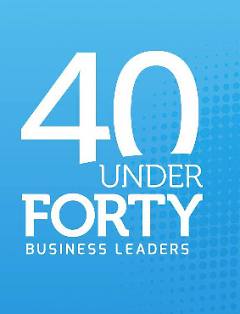I’m calling out the Emperor. He has no clothes. Hans Christian Andersen’s 1837 classic "The Emperor’s New Clothes" provides an apt idiom for Grand Rapids’ local award season. Social media has been abuzz with the announcement of Grand Rapids Business Journal’s 40 Under Forty, Young Non-Profit Professionals Network of Grand Rapids Leadership awards, Grand Rapids Area Chamber of Commerce Athena awards, and the list goes on. Are these awards the best way to acknowledge those who are making our community a better place to live, work and play? What type of work are we recognizing? Do these award recipients reflect an inclusive community?
Who are we recognizing?
In analyzing the past five years of one of the most lauded awards, the Grand Rapids Business Journal (GRBJ) 40 Under Forty recipients in 2010, 2011, 2012, 2013 and 2014, cumulatively 88% were White. Of all those who could be recognized in our community, this is interesting considering that 59% of Grand Rapids residents are White. According to our most recent Census Data, 21% of Grand Rapidians are African American and 16% are Hispanic. Yet, in the past five years only 6% of 40 Under Forty recipients are African American and 4% are Hispanic. Does this reflect an inclusive community that mirrors our demographics?
Furthermore, of the 200 awards given in the last five years, 27 individuals were recipients for two or more years, and two individuals were recipients in all five years. This is not due to lack of nominations, which in the case of the GRBJ, relies on a self-nominating process. The GRBJ stated that there were 171 nominations this year, a record high that broke the 2011 record of 140 nominations. With so many purportedly deserving recipients, why do we continue to recognize the same group of folks? Does high school really never end and the popular individuals forever receive all the accolades?
The 40 Under Forty list strives to recognize leaders across the private, public and nonprofit sectors. What do these awards say about who, and what, is valued in our community? Initiatives such as Grand Rapids being designated as a “Cool City,” Talent 2025 and Hello West Michigan are working to recruit and retain a diverse talent pool to foster economic development and ensure our community thrives. As prospective individuals consider living and working in our community, what do these publicized honors say about who we value, what it takes to fit in and who is admired? Drawing from feminist media theory, the concept of symbolic annihilation in J. R. Aulette and J. Wittner's "Gendered Worlds" reminds us, “When a group and their experience do not appear in the media, it sends a message that they do not matter and that their views are unimportant.” If folks who are anything other than the dominant image are using these awards as a way to understand our community, which given their publicity, seems plausible, this reflects a very narrow view of who we consider important and deserving of recognition.
I do not wish to imply that the individuals being acknowledged for our local awards are not deserving of being selected; I want to question whether this emphasis on awards is the best way to publicly recognize those who are doing impactful work, and whether this truly reflects our community.
What are we recognizing?
How are we measuring impact? Award winners are often chosen based on work that is tangible and easy to quantify: clear outputs, direct service provided and hands-on interaction. Of the past five years, 97% of the recipients have been employed in transactional, direct service arenas – i.e. real estate development, wealth management, communications consulting and nonprofits focusing heavily on providing service verses advocating for policy change. This means that those who are doing systems-level work that is more theoretical, behind the scenes efforts that are not very visible or work that takes a long time to see results are often not recognized. These long-term solutions, background efforts and systemic change projects are often the initiatives that have the most impact.
One of the poignant aspects of "The Emperor’s New Clothes" is that no one can see the fine new clothes, but each person does not want to take the risk of appearing unintelligent to their fellow community members, and thus everyone proceeds to comment on how beautiful the rich fabrics appear. As Grand Rapids residents, do we all really feel that these awards are a good way to highlight the best work in our community? If so, why don’t the demographics of those selected more closely resemble the demographic make-up of our community? What does it say about Grand Rapids if the same people continue to be recognized each year? Are they the only ones doing good work, and how are we defining “good” work?
Are we afraid to admit that these awards may not quite be worth all the buzz for fear of being chastised by our friends and neighbors? If we don’t begin truly talking about this, how long will we pretend that the naked Emperor is in beautiful attire? I am choosing to call it: this Emperor has no clothes.
The Rapidian, a program of the 501(c)3 nonprofit Community Media Center, relies on the community’s support to help cover the cost of training reporters and publishing content.
We need your help.
If each of our readers and content creators who values this community platform help support its creation and maintenance, The Rapidian can continue to educate and facilitate a conversation around issues for years to come.
Please support The Rapidian and make a contribution today.


Comments
Great article. Thanks for having the courage to speak up and using the Rapidian as the platform. #citizenjournalism